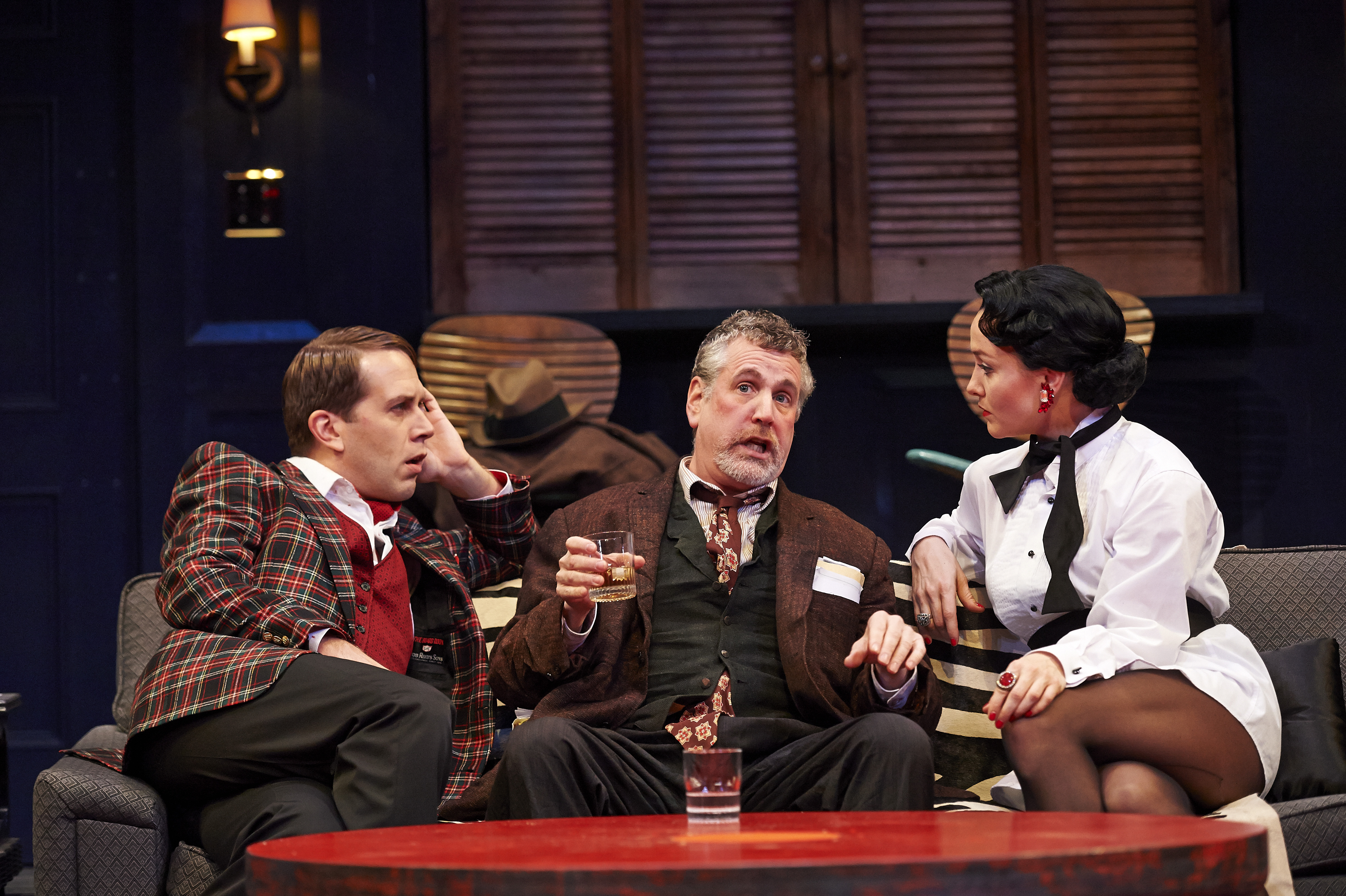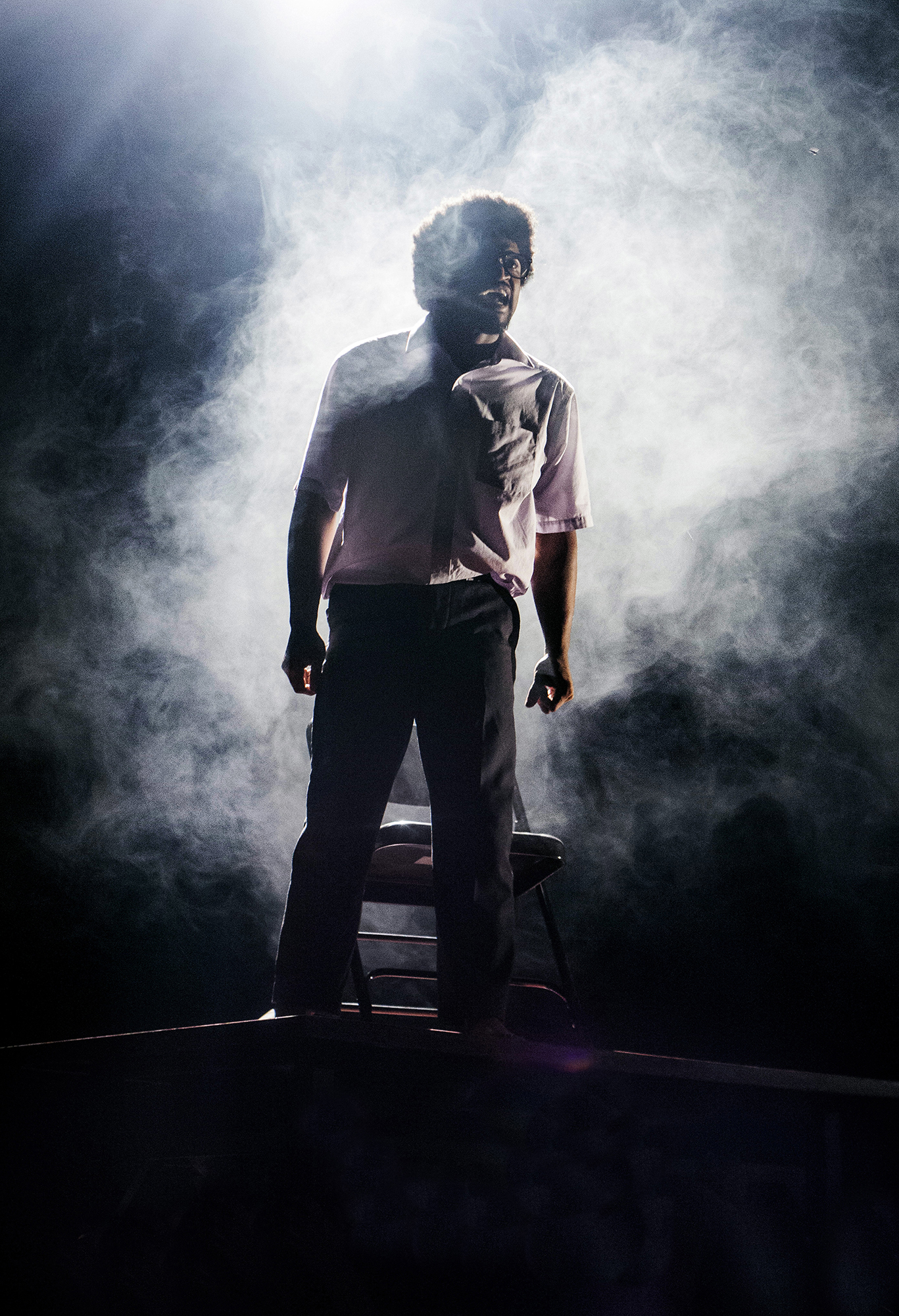Stage lights are shining on local theaters’ transition back to in-person performances. But are some changes here to stay?
By McKenna Corson
For over a year, a dark storm cloud encapsulated Earth.
This raging tempest of COVID-19 kept people in their homes, away from others.
Industries reliant on in-person experiences had no choice but to adapt to this new dependency on the internet. Greater Cleveland’s theater companies, like Playhouse Square, Cleveland Public Theatre and 2nd Act Ohio, all in Cleveland, and Beck Center for the Arts in Lakewood, sought creative alternatives to transform their live, on-stage productions into equally engaging virtual renditions.
The COVID-19 blight has now calmed slightly due to the brute forces of vaccinations and safety protocols. Greater Cleveland’s theaters finally have the opportunity to return to center stage once again, with some key safety alterations.
However, those whose livelihoods are in theater cannot help but question if their return beneath multicolored lights will be met with ongoing, raucous applause, or if the virus’ acidic precipitation leached deeper into pre-pandemic’s “normal” than supposed.
“Our viewpoint is that art is essential, and that we have a mission for our community that we need to deliver on,” says Raymond Bobgan, executive artistic director of Cleveland Public Theatre.
To local theaters, this highly anticipated transition to in-person, live performance carries positives and caveats. But as the mantra in theater goes, the show must go on.

Breaking the digital mold
Even though many local theater companies found success with their digital content, the dream of returning to in-person performances remained tenacious. It was on St. Patrick’s Day this year that Playhouse Square threw a curve ball into the local theater scene. Cleveland’s largest theater company announced “The Choir of Man” would come to town June 11 to perform a large-scale, in-person production – the first since the industry closed its doors in mid-March 2020.
“The way for us to break loose of the darkness was to make that bold decision that we were going to move ahead, even though there was no way to predict that was going to be possible,” says Gina Vernaci, CEO and president of Playhouse Square. “Within the bounds of safety, we were going to do everything in our power to see how we could make that happen.”
Months later, CPT and Beck Center announced their returns to in-person performances. CPT made its live, on-stage homecoming with “Panther Women: An Army for the Liberation,” on July 1, and the Beck Center with “This Girl Laughs, This Girl Cries, This Girl Does Nothing” on July 23.
“We wanted to produce something that was just a one-person show and that we had all our safety protocols in place,” says Beck Center’s artistic director Scott Spence, who explains that Beck Center had to receive permission from its union, Actors’ Equity Association, before it could commence in-person shows. “It really paves the way for us to go into our next season.”
Actors’ Equity required every member of Beck Center’s team – actors, directors, stage managers, designers, crew members and orchestra members – to receive the COVID-19 vaccine for the center to resume in-person shows.
The idea for CPT’s return came about when the theater company had rented tents to host its series of educational programs outdoors. Seeing the tents inspired the staff to do a summer season, despite being atypical and not having special funding. CPT opted for a gentle return to in-person audiences, performing workshop versions instead of full-scale productions with large sets, costumes and props. “Panther Women” was performed on CPT’s campus under a tent and also at the Cleveland Cultural Gardens’ Rockefeller Park on a brand-new stage that was built at the beginning of COVID-19.
“It’s an opportunity for artists to get their sea legs, for audiences to be together, to see work that’s in development,” Bobgan says.
2nd Act – an organization in which actors in recovery, staff and volunteers raise awareness about addiction and recovery through dramatic performances and theater workshops – will make its physical return to performances at schools and other organizations Nov. 1. The company’s Ohio regional director Karen Snyder says until its grand return, 2nd Act will use the time to take a creative hibernation, workshop scripts, undergo rehearsals and perform three virtual shows.
Snyder hopes for a future filled with in-person shows that rival performances prior to the pandemic by 2nd Act, formerly known as Improbable Players before merging with another organization under the new name 2nd Act this summer.
“Being back in person for all of the actors is going to provide a lot of healing and much needed in-person connection,” Snyder says.

Redefining normalcy
With companies sweeping the dust from their stages, theater goers will sit in front rows again instead of watching productions confined to a television or computer screen. But fans shouldn’t expect the exact same theater experience they were accustomed to before the pandemic. Some might not even be ready to make their theater homecomings with the virus still in the air.
“I think people are going to come back; some might have trepidation, and some will not,” Bobgan says. “But I think it’s going to normalize really, really quickly. It’s what we do as people: we come together, we share our stories and we reflect on who we are.”
One big question Greater Cleveland’s theaters have had to ask is if audience members are now adjusted to the shorter show lengths the theaters did virtually. Playhouse Square’s “The Choir of Man,” is 90 minutes without an intermission, which Vernaci says is “perfect because it’s an easy night at the theater.” However, she doesn’t see a future of shorter plays written without an intermission, as she believes audiences miss every aspect of observing live theater.
“In our business, you can’t sing faster or play the music faster to gain efficiencies, and you aren’t going to skip Act Two in order to accommodate that,” Vernaci says. “The audience experience is one where it’s a shared social experience. That’s why you come together.”
Another key question theaters have had to ask is if their virtual offerings should continue alongside in-person shows.
At the forefront of Beck Center’s decision regarding digital programming is that children under 12 are currently unable to receive the vaccine. Spence says while theatrical productions probably won’t see virtual iterations endlessly into the future, its education classes and camps could continue online versions until at least the fall.
“We’ll be ready to pivot if something necessitates that,” Spence says. “… Every day brings up a new question about how we should move forward.”
Playhouse Square and CPT echo Beck Center’s decision against doing a majority of online programming, aside from possibly doing some virtual education courses for children and families.
2nd Act, however, will continue virtual shows into the future. Snyder says the theater company will meet school or organizations’ requirements when it comes to safety protocols, being that many of 2nd Act’s shows pre-COVID-19 were done for 100 to 1,000 students gathered in auditoriums.
“As a touring theater company, our space is dependent on the clients who book us,” Snyder says. “Depending on what the restrictions are, we’re aware that the audience sizes could be smaller. I don’t think that the size necessarily is going to affect the performers.”

Unexpected positives
The pandemic’s impact on theater has been disastrous. But it’s in moments of uncontrollable hardship that Greater Cleveland’s theaters have no choice but to think optimistically and find ways to adapt.
At Playhouse Square, Vernaci says this transition period – where the company isn’t seating its fully capacity at its theaters – is prime time to test new things, like digital ticketing and digital playbills. And while Playhouse Square turned to online content during the pandemic, it served over 95,000 students throughout Northeast Ohio – a feat the theater company had never achieved before.
“Our approach is that it’s not like, this is the hand that was dealt to us,” Vernaci says. “This is the hand we were waiting for because look at all this that we now need to do, and can do.”
Snyder says the pandemic’s break allowed 2nd Act to receive more reactions and discover what its audience wants to see. Among the most important feedback Ohio’s 2nd Act chapter received was from the Cleveland Metropolitan School District, after the theater company did a number of virtual performances primarily centered around alcohol use. CMSD students informed 2nd Act that they were actually seeing more drug use either in their homes or in the community.
The students’ responses perfectly coupled with 2nd Act’s joining with Rhode Island nonprofit theater company, Creating Outreach About Addiction Support Together, effective July 1. Through the merger, 2nd Act acquired from COAAST a family drama targeting opioids that Snyder says “is going to be more relevant and powerful to our audiences.”
An unclear future
Greater Cleveland’s theaters will continue their in-person transition from the COVID-19 pandemic as safely as possible, the leaders say.
It was while seeing people enter the Mimi Ohio Theatre for “The Choir of Man” that Vernaci remembered how theater runs deeper than onstage productions.
“We as human beings are meant to gather; you can see it in the eyes of the audience who is coming to see ‘The Choir of Man,’” Vernaci says. “… You just feel like coming to the theater is the most normal thing we’ve done in a year and a half.”
Spence looks back with gratitude to have made it to the other side. He acknowledges that many theaters, restaurants and small businesses didn’t receive the same governmental funding and arts advocacy support that helped pull Beck Center out of COVID-19’s drowning rip current.
“We’ve learned that despite an international crisis, people still need the arts in their lives,” Spence says. “We’re all definitely leaning into next year with our eyes and ears open, because none of us are quite sure how all of this will work moving forward. But our glasses are half full.”










